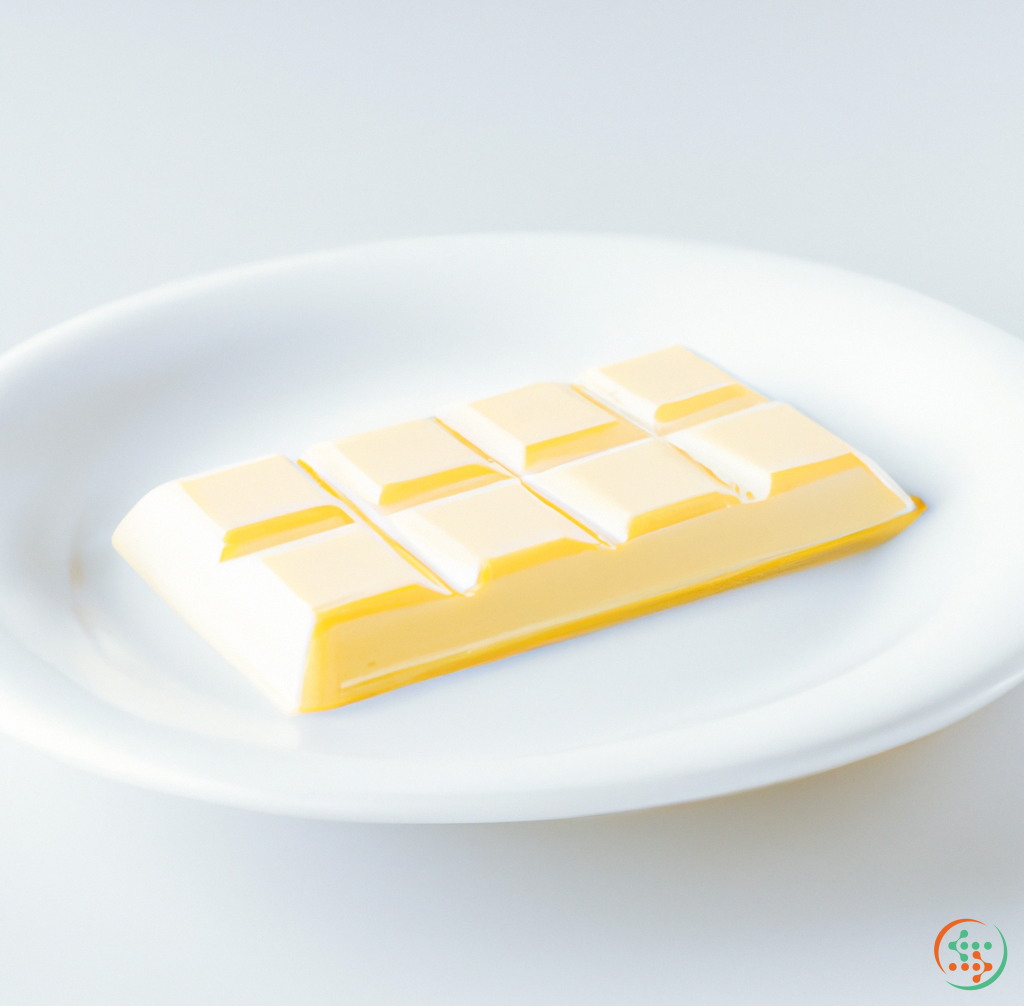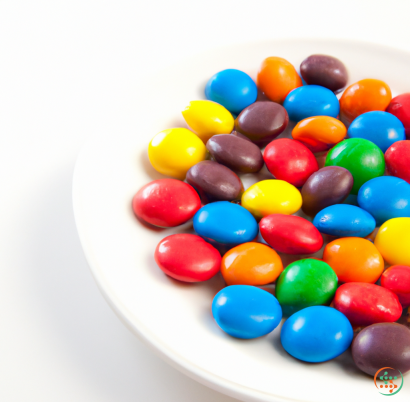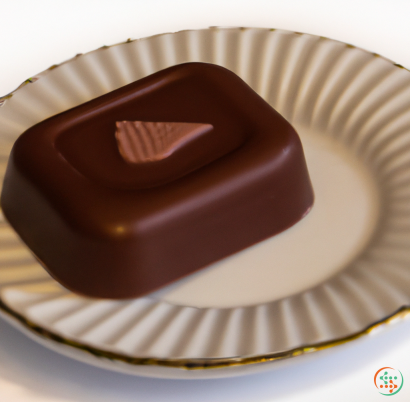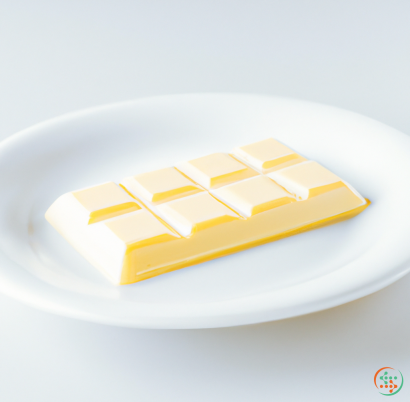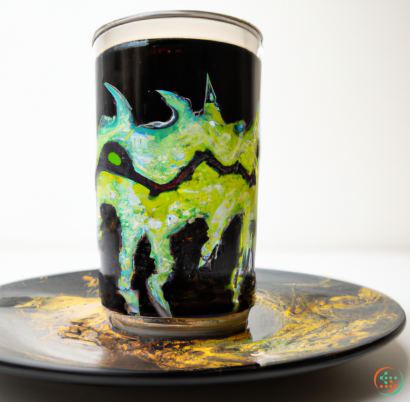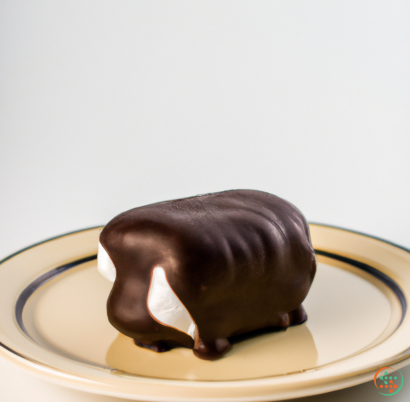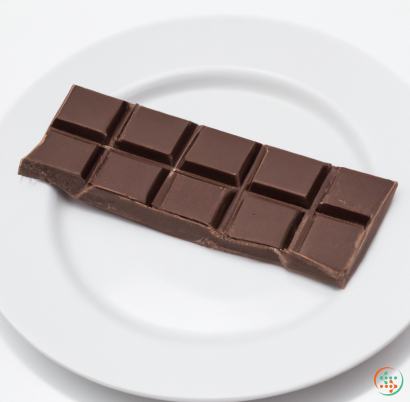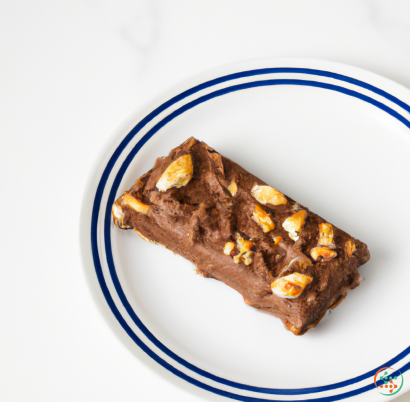White Chocolate
White chocolate is one of the most delightful treats out there. It's creamy, sweet, and smooth, giving us all the goodness of chocolate without the intense cocoa taste. But what exactly is white chocolate? The answer is a bit more complicated than you may think.
White chocolate is made from cocoa butter, sugar, and milk solids. The cocoa butter is made from the fatty portion of cocoa beans, giving us that classic velvety texture of the chocolate. Sugar, which is the sweetener, brings all the signature sweetness we all love in our chocolate. And finally, the milk solids, which consist of either powdered milk or condensed milk, add the milky flavor and creamy texture to the white chocolate.
The difference between white chocolate and other varieties, such as dark and milk, is that white chocolate does not contain cocoa solids as the other two do. This is why white chocolate has a milder flavor and lighter color. To be a true white chocolate, the cocoa butter must contain at least 20% cocoa butter and no more than 55% sugar. Anything higher than these amounts and it becomes an off-white colored confectionary material known as confectionery coating - not the same thing as white chocolate.
White chocolate, compared to its dark and milk counterparts, is fairly new to the market and was only developed in the 1930s by Nestle and Cadbury. Since then, it has become a popular ingredient in cakes and desserts. White chocolate serves as a great flavor mixer as it blends well with other ingredients to create complex flavors. Its smooth and creamy texture also adds richness and depth to many dishes that require a sweet element.
When buying white chocolate, it’s important to read the label carefully. Many store-bought white chocolates are not actually true white chocolate. They may contain vegetable oils, flavors, and other artificial additives to reduce the cost of production. Genuine white chocolate will often say “White Chocolate” on the front of the packet, while cocoa butter is often the main ingredient.
There are numerous ways to enjoy the delights of white chocolate. From traditional white chocolate truffle recipes, to white chocolate cheesecakes, cookies, and brownies, there are many opportunities to experience the luscious sweet treat. White chocolate can also be melted down and mixed with other ingredients, such as fruit or nuts, to create something completely drool worthy.
For those wanting to explore even further, there are now white chocolate spirits, wines and beers that bring out even greater depths of flavors. Crafty connoisseurs will also be pleased to know that white chocolate comes in many forms, ranging from bars and chips, to nibs and wafers.
The creamy, sweet and smooth style of white chocolate has won its place amongst all the other chocolate varieties and has been growing in popularity ever since it made its mark in the 1930s. With its delicate flavor, creamy texture and a variety of products to choose from, white chocolate may be the perfect choice for those wanting to explore the world of truly delicious chocolates.
White Chocolate: From Cocoa Bean to Dinner Plate
White chocolate is an often-misunderstood dessert confection. Commonly featuring vanilla and sometimes including an array of additives, this treat is a popular indulgence with a much more complex journey than many of its milk, dark, and semi-sweet counterparts. This blog post covers the full production of white chocolate, from cocoa bean to dinner plate, in a detailed and scientific way.
The Basics of White Chocolate
Though white chocolate has been enjoyed for centuries, it wasn’t officially recognized as a type of chocolate until 1996. To be classified as white chocolate, it must include cocoa butter (the fat from respectively processed cocoa beans) with no less than 20% milk fat and milk solids, at least 14% total milk solids, and no more than 55% sugar, among other requirements. It is also worth noting that, unlike other types of chocolate, white chocolate does not contain any cocoa solids. As such, it does not qualify as a “true” chocolate, but many still consider it to be a delicious indulgence.
Harvesting, Sorting, and Processing Cocoa
Cocoa beans, the starting ingredient for white chocolate, are grown on cacao trees, typically in tropical climates such as Central and South America, Africa, and Indonesia. To harvest them, cacao pods are collected and then split open. Inside, white pulp and cocoa seeds are collected and moved to fermentation boxes, where they remain for a few days before being spread out to dry in the sun. After 3-14 days, the beans have developed their flavor, texture, and color and are moved to a packing room and sorted based on size and weight.
The next step in transforming the beans into white chocolate is processing them into cocoa butter, which takes place in a device known as a cocoa butter press. Here, the cocoa beans are heated and then broken into tiny pieces called nibs. Then, the nibs are mixed with hot water, distilled, pressed, and dried until cocoa butter is extracted. This process requires a great deal of precision and expertise, and the beans must be heated thoroughly to ensure the right level of cocoa butter is released.
Producing White Chocolate
Once the cocoa butter is extracted, the process of producing white chocolate can begin. This is a multi-step process that requires the raw ingredients to be mixed, melted, and combined. First, cocoa butter is heated to create a liquid form and thus a creamy, spreadable base for white chocolate. Milk is then added for sweetness and dairy notes. Then, the mixture is blended to create a uniform consistency.
Sugar can then be added for sweetness, depending on the specific recipe. Vanilla extract is also often included for a classic aroma and subtle sweetness. In addition, other ingredients such as almonds, nuts, marshmallows, or dried fruit might be added depending on the desired flavor profile. After all of the ingredients have been thoroughly combined, the mixture is cooled, poured into molds, and left to harden.
Packaging White Chocolate
The last step in producing white chocolate is packaging the product. This usually involves wrapping the treats in plastic and cushioning them inside boxes with cushioning paper. The boxes can then be labeled with both nutritional and flavor information, as well as branding and UPC codes if desired. To ensure freshness and keep the chocolate from melting, they are also kept in cool rooms until they are ready to be shipped.
From Bean to Dinner Plate
Once the white chocolate is packaged, it can be sent all over the world for consumers to enjoy. Before serving, the chocolate bars must be removed from their packaging and cut into individual servings. For example, if making a dessert such as a white chocolate mousse, the bars must first be melted in a double boiler over gentle heat. The chocolate should stir occasionally, and additional ingredients like cream, eggs, and sugar may be added to complete the recipe. Once the mousse is prepared, it can be placed in cups and topped with additional white chocolate for presentation and flavor. Finally, the white chocolate mousse is ready to be served and enjoyed.
Conclusion
White chocolate is a unique and tasty treat that requires time, expertise, and care to create. From harvesting and fermenting cocoa beans to pressing cocoa butter to the final packaging and presentation, it is an immensely detailed and scientific process that’s necessary to bring this favorite sweet to dinner plates all over the world. We hope this post gives readers a better understanding of what white chocolate is and the journey it takes to get to people’s plates.
| Vitamin A | 0.009 mg | |
| Vitamin E | 0.96 mg | |
| Vitamin K | 0.0091 mg | |
| Vitamin C | 0.5 mg | |
| Vitamin B1 | 0.06 mg | |
| Vitamin B2 | 0.28 mg | |
| Vitamin B3 | 0.75 mg | |
| Vitamin B4 | 0.0295 grams | |
| Vitamin B5 | 0.61 mg | |
| Vitamin B6 | 0.06 mg | |
| Vitamin B9 | 0.007 mg | |
| Vitamin B12 | 0.56 ug |
| Calcium | 0.199 grams |
Daily Value 1.3 g
|
| Iron | 0.24 mg |
Daily Value 0.018 g
|
| Magnesium | 0.012 grams |
Daily Value 0.4 g
|
| Phosphorus | 0.176 grams |
Daily Value 1.25 g
|
| Potassium | 0.286 grams |
Daily Value 4.7 g
|
| Sodium | 0.09 grams |
Daily Value 2.3 g
|
| Zinc | 0.74 mg |
Daily Value 0.011 g
|
| Copper | 0.06 mg |
Daily Value 0.9 mg
|
| Manganese | 0.01 mg |
Daily Value 0.0023 g
|
| Selenium | 0.0045 mg |
Daily Value 0.055 mg
|
| Total Sugars | 59 grams |
per 100g
|
| Caproic acid (6:0) | 0.16 grams |
|
| Caprylic acid (8:0) | 0.12 grams |
|
| Capric acid (10:0) | 0.22 grams |
|
| Lauric acid (12:0) | 0.63 grams |
|
| Myristic acid (14:0) | 0.8 grams |
|
| Palmitic acid (16:0) | 7.95 grams |
|
| Stearic acid (18:0) | 9.15 grams |
|
| Butyric acid (4:0) | 0.31 grams |
|
| Total Saturated fatty acids: | 19.34 g | |
| Oleic acid (18:1) | 8.99 grams |
|
| Palmitoleic acid (16:1) | 0.06 grams |
|
| Total Monounsaturated fatty acids: | 9.05 g | |
| Linolenic acid (18:3) | 0.1 grams |
|
| Linoleic acid (18:2) | 0.91 grams |
|
| Total Polyunsaturated fatty acids: | 1.01 g | |
| Cholesterol | 0.02 grams |
|
| Total Sterols: | 0.02 g | |
